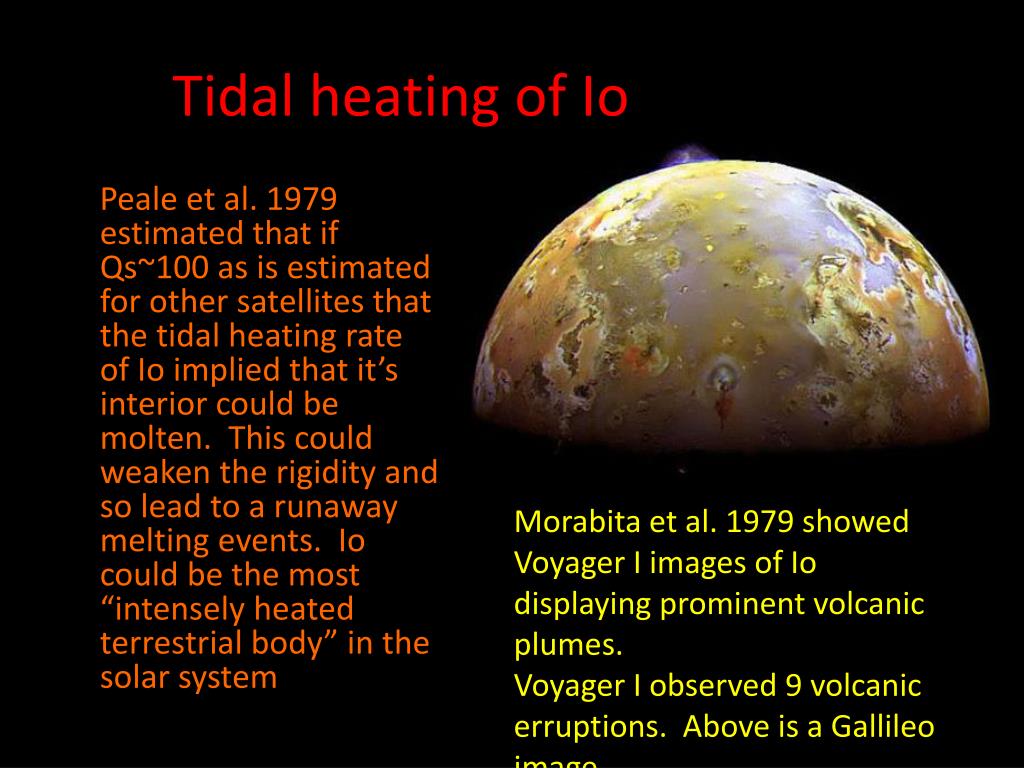

Lighter regions, crosscut by extensive grooves and ridges and only slightly less ancient, cover the remainder. Dark regions, saturated with impact craters and dated to four billion years ago, cover about a third of the satellite. Its surface is composed of two main types of terrain. A saltwater ocean is believed to exist nearly 200 km below Ganymede's surface, sandwiched between layers of ice. It is a fully differentiated body with an iron-rich, liquid core. It also has the highest mass of all planetary satellites, with 2.02 times the mass of the Earth's moon.Ganymede is composed of approximately equal amounts of silicate rock and water ice. Its diameter is 2% larger than that of Titan, the second largest moon. It has a diameter of 5,268 km (3,273 mi), 8% larger than that of the planet Mercury, but has only 45% of the latter's mass. Completing an orbit in roughly seven days, Ganymede participates in a 1:2:4 orbital resonance with the moons Europa and Io, respectively. It is the seventh moon and third Galilean satellite outward from Jupiter. Ganymede is a satellite of Jupiter and the largest moon in the Solar System. Elements heavier than hydrogen and helium were formed in the cores of ancient and exploding stars, so the first generation of stars had to die before the universe could be enriched with these atoms.

However, stars brighter and hotter than the Sun are rare, while substantially dimmer and cooler stars, known as red dwarfs, are common, making up 85 percent of the stars in the galaxy.The Sun is a population I star it was born in the later stages of the universe's evolution, and thus contains more elements heavier than hydrogen and helium ("metals" in astronomical parlance) than older population II stars. Stars following this pattern are said to be on the main sequence, and the Sun lies right in the middle of it. Stars are classified by the Hertzsprung–Russell diagram, a graph that plots the brightness of stars with their surface temperatures. Its large mass (332,900 Earth masses produces temperatures and densities in its core great enough to sustain nuclear fusion, which releases enormous amounts of energy, mostly radiated into space as electromagnetic radiation, peaking in the 400–700 nm band of visible light.The Sun is classified as a type G2 yellow dwarf, but this name is misleading as, compared to the majority of stars in our galaxy, the Sun is rather large and bright. The show is broadcast on Radio Cardiff every Monday evening 8-8:30pm and repeated Tuesday nights 11-11:30pm.The Sun is the Solar System's star, and by far its chief component. Each week, presenter Rhys Phillips takes a look at stories of interest from the worlds of science, technology, engineering and mathematics, bringing these fields to a wider audience and promoting these subject areas to school pupils. Pythagoras’ Trousers is a radio show from the South Wales Networks of theInstitution of Engineering & Technology and Radio Cardiff. Finally, this week’s Subject of Science looks at the history of the zip.

Later on, Chris North talks to Leigh Fletcher from the University of Oxford about the outer solar system and Hugh Lang guides us through the night sky throughout May. On this week’s programme, Rhys talks to Peter King from DPI Limited about job opportunities for science and engineering graduates amongst small businesses in Wales and our STEM Ambassador of the Week is Brij Geerjanan from Tata Steel. The podcast can be downloaded from the following website. We focussed for a while on future Jupiter missions, including Juno (en route and due to arrive in 2016) and JUICE (the ESA Jupiter Icy Moons Explorer, due to arrive in 2030). We spent 20 minutes discussing the outer solar system, with themes ranging from the formation of the giant planets and why the gas and ice giants appear so different future missions to explore the giant planets and their icy moons and professional-amateur collaborations on giant planet storm tracking. At the end of April, Chris North (University of Cardiff, BBC Sky at Night, interviewed me for the Pythagoras’ Trousers radio podcast, which was broadcast on Monday April 30th on Radio Cardiff.


 0 kommentar(er)
0 kommentar(er)
